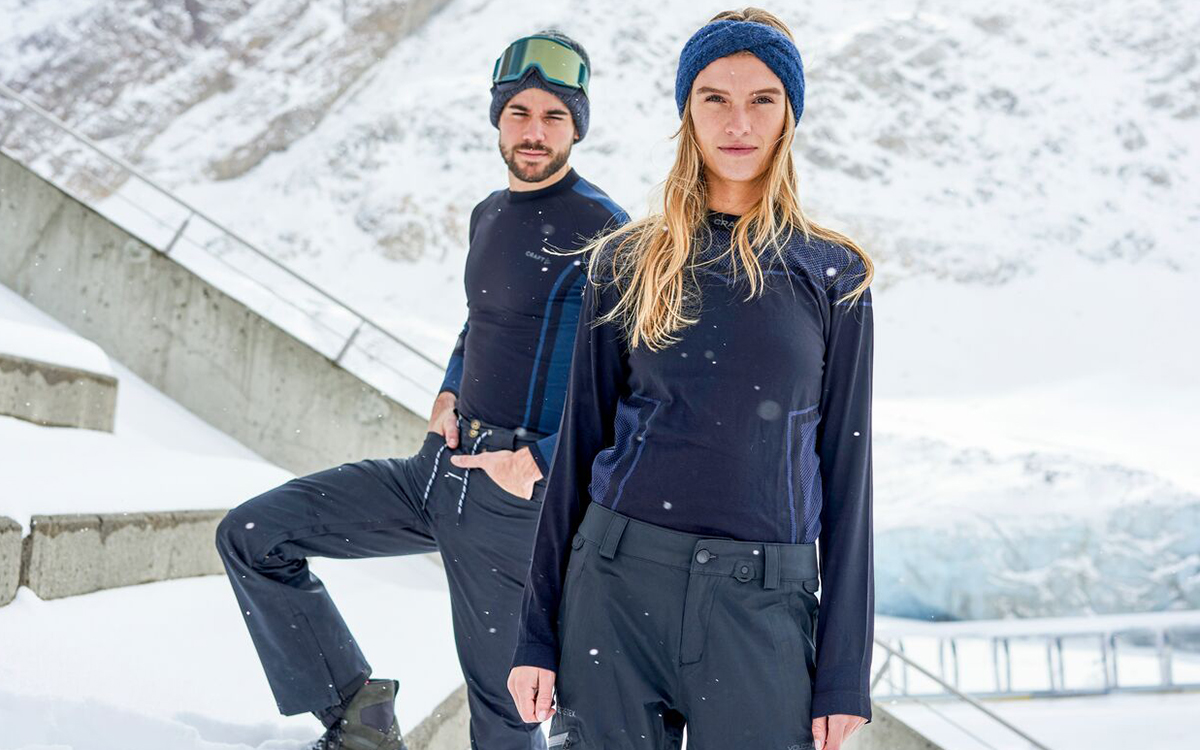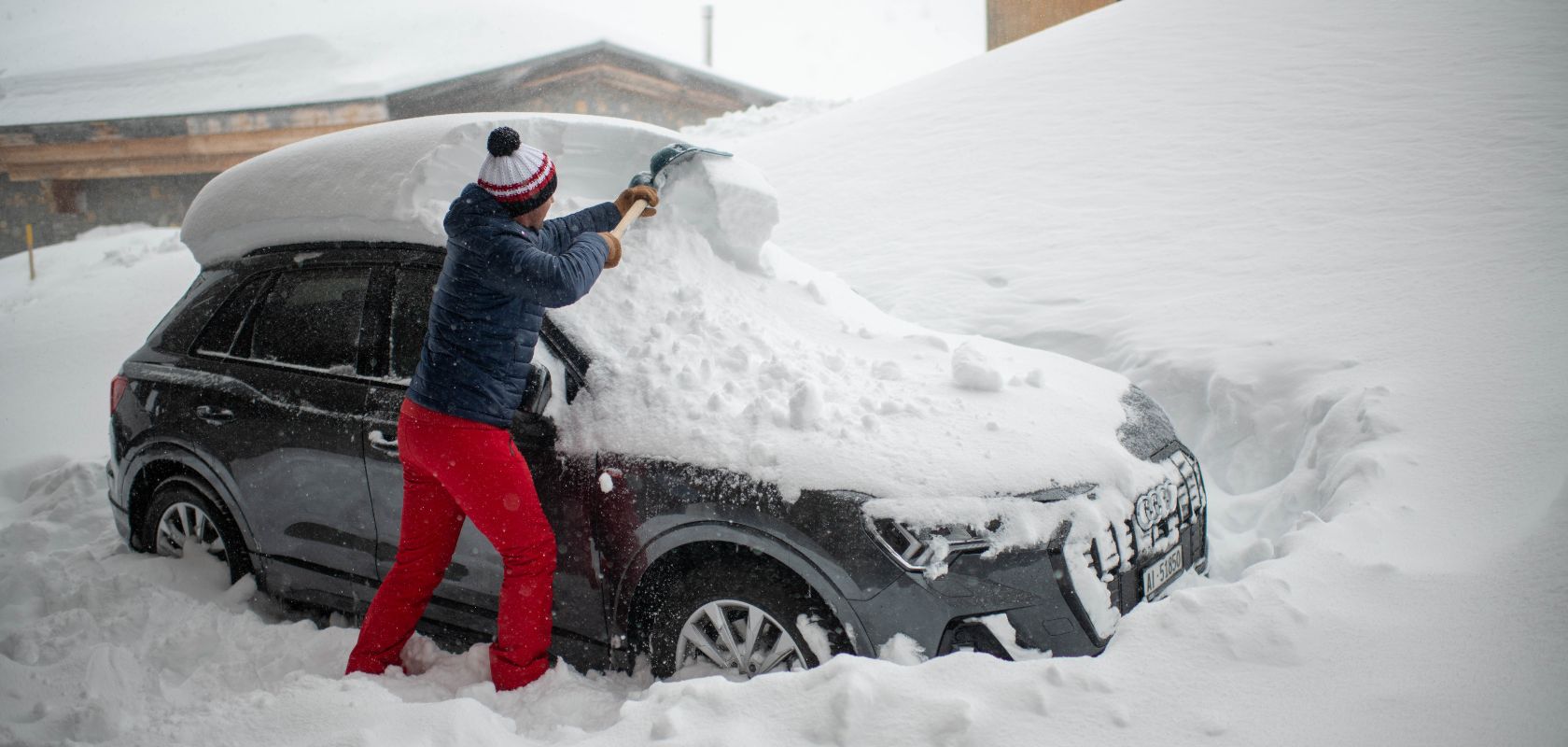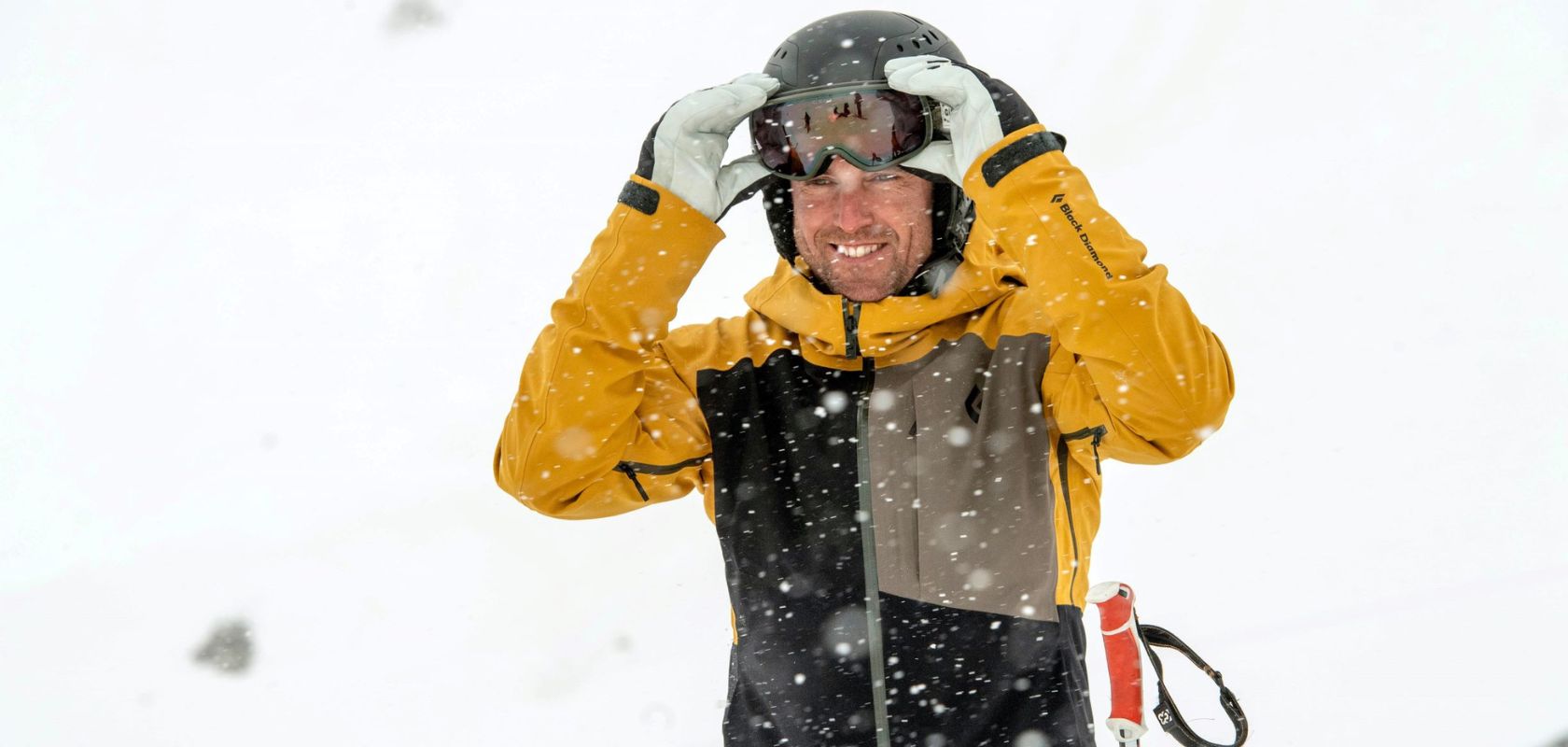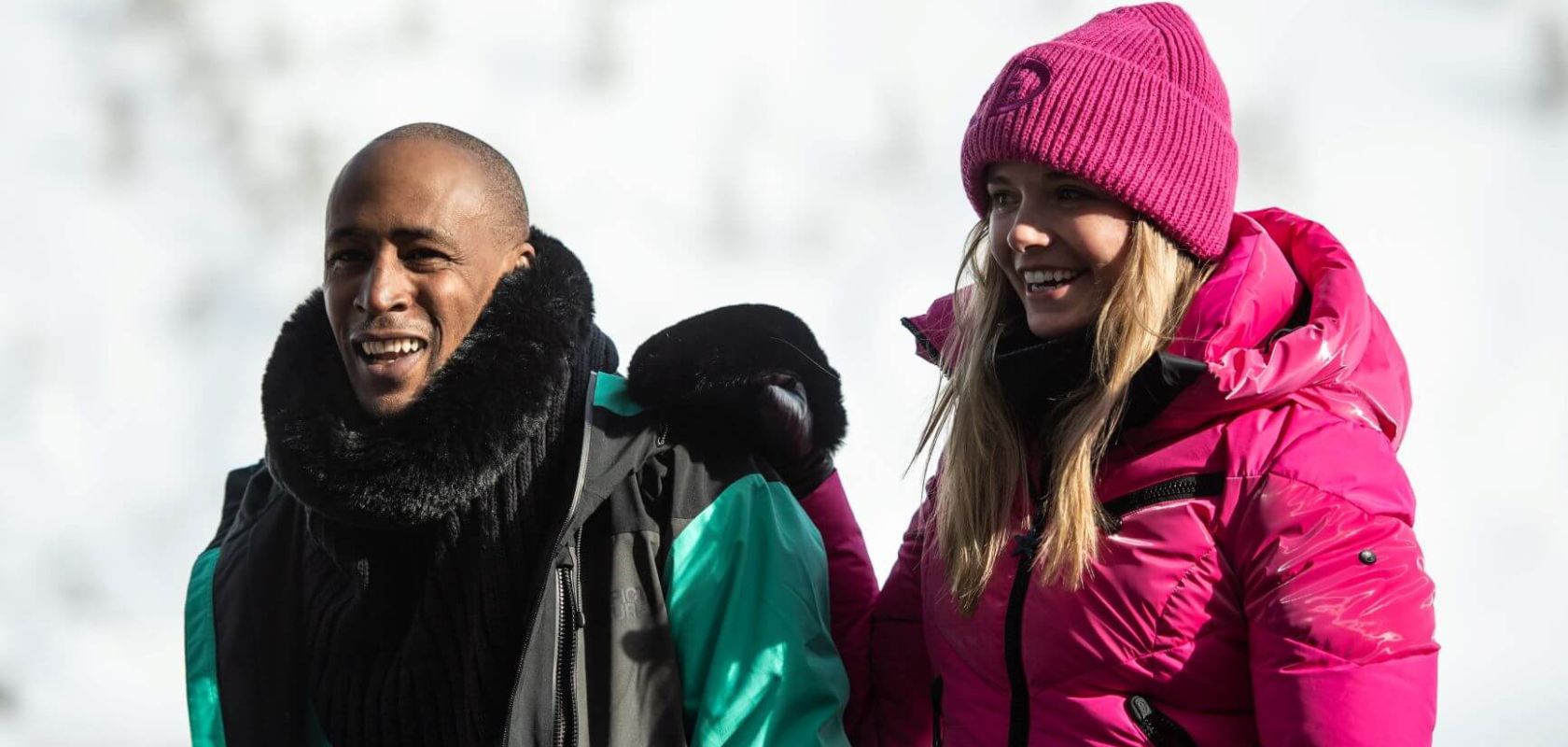Your Ultimate Guide To Ski Layering
For Comfy, Sweat-Free Skiing Adventures
When you’re in the mountains, it’s important to enjoy every moment. One of the key factors to this enjoyment? Your ski layering.
Any experienced skier will admit that having an adaptable layering system is everything on the slopes. It’s comfort, warmth and key to keeping you smiling – especially when managing changing temperature conditions. Let’s explore which layers go where, which materials are best for the job and how to make the right choice.
Why Is Layering So Important For Skiing?
Layering is the foundation of every skier’s outfit — and for good reason. Skiing and snowboarding are physically demanding sports that take place in cold, often unpredictable mountain environments. Whether you're cruising down a groomer or sitting still on a windy chairlift, your clothing needs to adapt quickly to changing conditions. That’s where a strategic layering system comes in.
A reliable layer setup acts like a custom climate-control system for your body.
Here’s why it matters:
- Regulates body temperature: Skiing combines high bursts of activity on the slopes with long periods of stillness on lifts. Layering helps you stay warm when you're stationary and promotes breathability when you're moving fast.
- Wicks away sweat: A good base layer pulls moisture away from your skin. This keeps you dry — and being dry is essential to staying warm.
- Protects from wind and snow: Outer layers like shell jackets and pants create a barrier against harsh elements without trapping excess heat inside.
- Allows flexibility: With a layering system, you can easily adjust based on conditions. If the sun comes out, shed a layer. If clouds roll in, add one back.
Because your body temperature fluctuates so much during a day on the slopes, you need clothing that works with you — not against you. The right layers keep you cosy without overheating, ensuring every moment on the mountain is as comfortable as it is exhilarating.
In short, having the ability to adapt your outfit means more time enjoying the snow and less time worrying about the weather. That’s the power of smart layering.
Your base layer is the foundation of your ski outfit — and easily one of the most important. Worn directly against your skin, its main role is to manage moisture and help regulate your body temperature throughout the day.
Whether you're tackling steep terrain or spending time on chilly chairlift rides, a quality base layer keeps sweat from becoming your worst enemy. By pulling moisture away from your skin, it prevents that cold, clammy feeling that can ruin a good ski day.
Here’s what you need to know:
- Moisture-wicking is key: The base layer’s top job is to draw sweat away from your skin so it evaporates quickly. This keeps you dry and helps prevent your body from cooling down too fast after periods of activity.
- Choose technical fabrics: Look for materials like:
- Merino wool – naturally breathable, odour-resistant, and warm even when damp
- Polyester blends – lightweight, quick-drying, and affordable
- Avoid cotton: Cotton holds onto moisture and takes a long time to dry, which can leave you cold and uncomfortable.
The base layer might not be the most visible part of your ski outfit, but when it comes to staying warm and dry, it does the heavy lifting. Invest in a few good-quality base layers, and you’ll feel the difference from your very first run.
What Are Base Thermal Layers Made From?
When choosing base thermal layers for skiing, the material you select is crucial for staying comfortable on the mountain. While there are several fabrics available, two stand out for their performance and popularity: polyester and merino wool.
Base thermal layers are typically made from:
Polyester
- Synthetic fibre
- Lightweight, making it easy to layer and move in
- Fast drying, so sweat and moisture don’t linger
- Easy to care for — it washes and wears well
- Offers good value for money, making it a practical choice for many skiers
Merino Wool
- Natural fibre sourced from merino sheep
- Exceptionally breathable, helping to regulate body temperature
- Naturally odour resistant, so it stays fresher for longer
- Soft against the skin, providing comfort without itchiness
- Has the best weight to warmth ratio for its class
- Remains warm even when damp, giving extra reassurance on wet or snowy days
Both materials have their own set of strengths, so it’s worth considering your priorities — whether it’s quick-drying convenience, budget, or ultimate comfort — when picking your base thermal layers for skiing.
How To Choose A Base Layer
Selecting the right base layer starts with understanding your own comfort levels and the insulation of your ski outerwear. If you tend to feel the cold easily or your ski jacket and pants are not insulated, it’s essential to choose both a top and bottom base layer to boost warmth.
For those venturing into backcountry skiing, the priorities shift. Lightweight and quick-drying base layers are key for managing sweat and variable effort levels in more remote settings. In these situations, you’ll want clothing that quickly wicks moisture and dries fast to prevent chills if you stop or the weather changes.
Consider these points when choosing a base layer:
- Insulation needs:
- If your jacket/pants are uninsulated, wear both top and bottom base layers.
- If you have insulated outerwear, a lighter or single base layer may be enough.
- Activity level:
- Backcountry or high-output skiing calls for lightweight, highly breathable, and fast-drying base layers.
- If you ski all day, pick something you’ll still find comfortable if you shed a mid-layer.
- Breathability and versatility:
- Opt for base layers that are breathable to manage temperature and sweat.
- Versatility is important to handle fluctuating weather and exertion.
- Personal warmth:
- Take your own tolerance for cold into account—some feel the chill more than others.
The best base layers keep you warm, manage moisture, and ensure comfort no matter how the conditions shift over the course of your ski day. With the right choice, you’ll enjoy a more comfortable and flexible experience on the slopes.
A mid-layer is the essential component that sits between your base layer and your ski jacket, acting as the main temperature regulator in your ski clothing system. Its main role is to trap body heat to keep you warm, while also allowing moisture to escape so you don’t get sweaty or clammy under your outer layers.
The best mid-layers balance warmth with comfort — without adding extra bulk that could restrict your movement. This means you stay toasty on the lift or during breaks, but still have freedom to carve turns and tackle the slopes.
Key points about mid-layers:
- Primary function:
- Traps and retains body heat for warmth
- Allows sweat and moisture to escape, preventing chills
- Placement:
- Sits directly above the base layer and below your ski jacket or shell
- Comfort-focused:
- Should offer insulation without feeling bulky
- Allows for unrestricted movement, even during active skiing
- Versatility:
- Can be adjusted (added or removed) depending on weather, activity level, or how warm you run personally
Choosing the right mid-layer is crucial for a successful day on the slopes, ensuring your layering system adapts to both changing mountain weather and your own comfort needs.
The insulating layer plays a crucial role in your ski layering system, especially when the mercury drops and you need extra protection from the cold. Placed over your base and mid-layers, this layer focuses on guarding your body heat, helping you stay warm no matter how frigid the conditions become.
On the chilliest ski days, adding or swapping in an insulating jacket can make all the difference. Insulating layers are designed to be easy to pack—you can stash one in your backpack if you don’t need it at first, and pull it out when temperatures suddenly dip. This adaptability is a lifesaver in unpredictable mountain weather.
Key points about insulating layers:
- Primary function:
- Conserves and traps body heat, reducing heat loss in very cold conditions
- Best for:
- The coldest days on the mountain or when you anticipate temperature swings
- Flexibility:
- Easy to add to or replace your mid-layer depending on how cold it gets
- Typically lightweight and compressible for hassle-free packing
- Practicality:
- Keeps you warm without sacrificing the agility and comfort you need for skiing
By having an insulating layer ready, you ensure your layering system can adapt quickly if conditions turn colder than expected—helping you ski longer and more comfortably, even in the harshest winter weather.
What Are Mid-Layers Made From?
Mid-layers come in a variety of materials, each with its own strengths for different skiing conditions. Fleece mid-layers are a popular choice — available in different thicknesses, from thin and lightweight to heavier options meant for colder days.
Lightweight fleece works well for mild conditions or high-output skiing, while heavyweight fleece provides a boost of warmth when temperatures drop.
If you’re prone to getting cold or ski primarily in colder regions, an insulating jacket is a strong mid-layer option. These are specifically designed to trap body heat while remaining breathable, offering excellent warmth without sacrificing comfort or movement. There are two main types of insulating mid-layers, each with distinct advantages:
Synthetic Insulation:
- Best for active use on the mountain
- Fast drying in wet or sweaty conditions
- Water-resistant, maintaining warmth even when damp
- Hypoallergenic for sensitive skin
- Breathable, making it ideal for high-output skiing and changing conditions
Down Insulation:
- Best suited for cold, dry conditions
- Extremely lightweight and easy to pack
- Offers superior insulation
- Provides the best warmth-to-weight ratio of any insulation material
- Can be more expensive than synthetic options
Choosing the right mid-layer depends on your skiing style and needs. Each material has unique benefits, whether you prioritise fast-drying performance for active days or maximum warmth for long, cold chairlift rides. The key is balancing insulation, breathability, and comfort to keep you warm and adaptable on the slopes. Discover a more in-depth guide on finding the right insulation here.
The ski jacket is your outermost layer and your main line of defense against the elements. It’s designed to shield you from snow, wind, and sometimes rain—while allowing your body to breathe and move as you ski. The type of ski jacket you choose will depend on your skiing conditions, your activity level, and how long you plan to stay out on the slopes.
What's A Hardshell Ski Jacket?
- Top-tier weather protection.
- It’s both waterproof and windproof while maintaining breathability.
- Allowing sweat to escape and preventing moisture buildup.
Hardshell fabrics often use polyester or nylon and they have an outer layer, a waterproof-breathable membrane, and an inner layer.
These fabrics feature a Durable Water Repellent (DWR) coating to shed moisture plus, waterproof membranes like GORE-TEX, Pertex Shield, H2No, and DryVent offer varying degrees of protection – ask an in-store gear specialist for more advice or head to our Ski Jacket Buying Guide.
Even though they have excellent weather defence, hardshells are less breathable than softshells. Consider them ideal for heavy snow, while a softshell might offer more comfort in milder Spring skiing conditions.
For hardshell ski jackets made without harmful chemicals, discover Patagonia’s innovative ski jacket range – free from perfluorinated chemicals.
What's A Softshell Ski Jacket?
- Softshells offer moderate weather protection
- They’re comfortable and breathable
- They offer flexibility rather than complete waterproofing
Crafted from polyester or nylon blends, they range from lightweight and stretchy to sturdy and abrasion-resistant. Despite featuring Durable Water-repellent (DWR) finishes to repel moisture, they aren’t entirely waterproof.
Various styles are designed for specific activities—for example, those for backcountry skiing adventures focus on warmth and comfort with heat-trapping linings.
Softshells are versatile. Suitable for changing temperatures and changing seasons, unlike hardshells. However, for heavy rain or snow, a hardshell offers better protection.
Softshells excel in activities where comfort, breathability, and movement are key, extending their use beyond wet-weather conditions.
Layering accessories may seem like small additions to your ski outfit, but they make a big difference when it comes to comfort and warmth on the mountain. These extras help protect vulnerable areas like your fingers, head, and neck, especially during downtime or in tricky weather.
One essential accessory for many skiers is thermal liner gloves. These are especially useful if you struggle with cold fingers or if you like to mess with your gear—adjusting boot buckles or snapping pictures—without losing warmth. They also serve as a great backup layer for extra hand warmth on very cold days.
Keeping your head and neck warm is just as important, since a lot of body heat can be lost through these areas. An insulating buff or beanie is perfect for staying cosy while waiting in lift lines or relaxing during après-ski. In addition to warmth, these accessories help cover up helmet hair, making you feel more comfortable off the slopes.
These accessories are simple yet highly effective additions to your layering system, ensuring you stay comfortable from the first chair to the last run and beyond.
Why Is A Flexible Layering System Important?
Efficiently adjusting your layers throughout the day is crucial. Removing or adding layers as needed—whether it’s the chilly morning chairlift ride or the sun-soaked afternoon restaurant deck, sipping on a hot chocolate, it’s key to staying comfortable and dry.
Whether you’re a newbie or an expert skier exploring the backcountry, the right layering system shapes your skiing experience. Uncomfortable temperatures—be it too hot or too cold—can mar an otherwise fantastic day on the slopes.
For tailored advice on picking the right ski layers, seek support from experts at your nearest Snow+Rock store.
Stay comfy, warm and smiley all day long by making the right choice with people who love the snow as much as you.
Related Articles

Let us know you agree to cookies
We use marketing, analytical and functional cookies as well as similar technologies to give you the best experience. Third parties, including social media platforms, often place tracking cookies on our site to show you personalised adverts outside of our website.
We store your cookie preferences for two years and you can edit your preferences via ‘manage cookies’ or through the cookie policy at the bottom of every page. For more information, please see our cookie policy.









